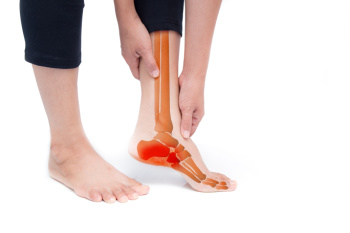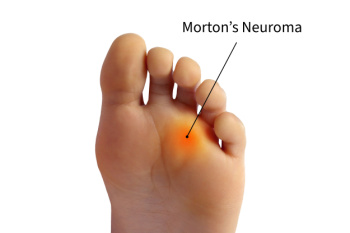Blog

When the nerves in the feet lose sensation or do not send signals properly, the risk of injury increases. Cuts, blisters, or sores may go unnoticed and can become infected before they are detected. Reduced awareness of temperature can lead to burns from hot surfaces, or frostbite in cold conditions. Balance may be affected, making falls more likely. Over time, untreated injuries and infections can progress to serious tissue damage, sometimes requiring surgical intervention. Chronic pain from nerve damage can also interfere with daily activities, sleep, and overall quality of life. In people with diabetes, these complications are especially concerning, as slower healing can lead to further medical issues. Regular foot checks, wearing protective footwear, and prompt attention to any changes are essential steps in prevention. If you have symptoms of nerve damage, it is suggested that you see a podiatrist for a thorough evaluation and guided advice.
Neuropathy
Neuropathy can be a potentially serious condition, especially if it is left undiagnosed. If you have any concerns that you may be experiencing nerve loss in your feet, consult with One of our podiatrists from Mitchell Foot & Ankle. Our doctors will assess your condition and provide you with quality foot and ankle treatment for neuropathy.
What Is Neuropathy?
Neuropathy is a condition that leads to damage to the nerves in the body. Peripheral neuropathy, or neuropathy that affects your peripheral nervous system, usually occurs in the feet. Neuropathy can be triggered by a number of different causes. Such causes include diabetes, infections, cancers, disorders, and toxic substances.
Symptoms of Neuropathy Include:
- Numbness
- Sensation loss
- Prickling and tingling sensations
- Throbbing, freezing, burning pains
- Muscle weakness
Those with diabetes are at serious risk due to being unable to feel an ulcer on their feet. Diabetics usually also suffer from poor blood circulation. This can lead to the wound not healing, infections occurring, and the limb may have to be amputated.
Treatment
To treat neuropathy in the foot, podiatrists will first diagnose the cause of the neuropathy. Figuring out the underlying cause of the neuropathy will allow the podiatrist to prescribe the best treatment, whether it be caused by diabetes, toxic substance exposure, infection, etc. If the nerve has not died, then it’s possible that sensation may be able to return to the foot.
Pain medication may be issued for pain. Electrical nerve stimulation can be used to stimulate nerves. If the neuropathy is caused from pressure on the nerves, then surgery may be necessary.
If you have any questions, please feel free to contact our office located in Chicago, IL . We offer the newest diagnostic and treatment technologies for all your foot care needs.

Morton’s neuroma occurs when the tissue surrounding a nerve in the ball of the foot thickens, often causing burning pain, tingling, or a feeling like there is a pebble in the shoe. A podiatrist begins by confirming the diagnosis through a physical exam and imaging, if needed. Treatment may include footwear changes to reduce pressure on the forefoot, custom orthotics to improve foot alignment, or padding to cushion the affected area. Anti-inflammatory medications and targeted stretching can also help to relieve symptoms. In more persistent cases, injections or minor surgical procedures may be considered to ease nerve irritation. Addressing the condition early can help prevent worsening pain and restore comfort while walking. If you experience ongoing discomfort in the ball of your foot, it is suggested you have it evaluated by a podiatrist for an accurate diagnosis and appropriate treatment solutions.
Morton’s neuroma is a very uncomfortable condition to live with. If you think you have Morton’s neuroma, contact One of our podiatrists of Mitchell Foot & Ankle. Our doctors will attend to all of your foot care needs and answer any of your related questions.
Morton’s Neuroma
Morton's neuroma is a painful foot condition that commonly affects the areas between the second and third or third and fourth toe, although other areas of the foot are also susceptible. Morton’s neuroma is caused by an inflamed nerve in the foot that is being squeezed and aggravated by surrounding bones.
What Increases the Chances of Having Morton’s Neuroma?
- Ill-fitting high heels or shoes that add pressure to the toe or foot
- Jogging, running or any sport that involves constant impact to the foot
- Flat feet, bunions, and any other foot deformities
Morton’s neuroma is a very treatable condition. Orthotics and shoe inserts can often be used to alleviate the pain on the forefront of the feet. In more severe cases, corticosteroids can also be prescribed. In order to figure out the best treatment for your neuroma, it’s recommended to seek the care of a podiatrist who can diagnose your condition and provide different treatment options.
If you have any questions, please feel free to contact our office located in Chicago, IL . We offer the newest diagnostic and treatment technologies for all your foot care needs.

Toe pain, which can range from mild discomfort to severe irritation, often signals an underlying issue. Common causes include bunions, which show as a bony bump on the side of the foot, and ingrown toenails that pierce the surrounding skin. Morton’s neuroma can cause sharp, burning pain between the toes, while gout results in sudden joint inflammation and swelling. Additionally, cellulitis, a serious skin infection, can also lead to pain and redness. A podiatrist can diagnose the cause, provide treatments such as medications, orthotics, or minor procedures, and help prevent complications. Ignoring toe pain can affect mobility and overall foot health. If you are experiencing toe pain, it is suggested that you schedule an appointment with a podiatrist who can provide an accurate diagnosis and treatment.
Toe pain can disrupt your daily activities. If you have any concerns, contact One of our podiatrists of Mitchell Foot & Ankle. Our doctors can provide the care you need to keep you pain-free and on your feet.
What Causes Toe Pain?
Most severe toe pain is caused due to a sports injury, trauma from dropping something heavy on the toe, or bumping into something rigid. Other problems can develop over time for various reasons.
Toe pain can be caused by one or more ailments. The most common include:
- Trauma
- Sports injury
- Wearing shoes that are too tight
- Arthritis
- Gout
- Corns and calluses
- Hammertoe
- Bunions
- Blisters
- Ingrown toenails
- Sprains
- Fractures (broken bones)
- Dislocations
When to See a Podiatrist
- Severe pain
- Persistent pain that lasts more than a week
- Signs of infection
- Continued swelling
- Pain that prevents walking
Diagnosis
In many cases the cause of toe pain is obvious, but in others, a podiatrist may want to use more advanced methods to determine the problem. These can range from simple visual inspections and sensation tests to X-rays and MRI scans. Prior medical history, family medical history, and any recent physical traumatic events will all be taken into consideration for a proper diagnosis.
Treatment
Treatments for toe pain and injuries vary and may include shoe inserts, padding, taping, medicines, injections, and in some cases, surgery. If you believe that you have broken a toe, please see a podiatrist as soon as possible.
If you have any questions please contact our office located in Chicago, IL . We offer the newest diagnostic and treatment technologies for all your foot and ankle needs.

